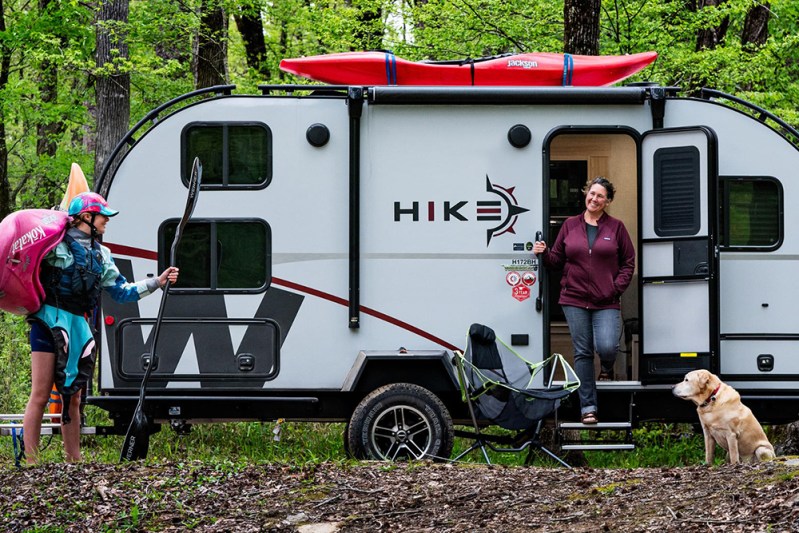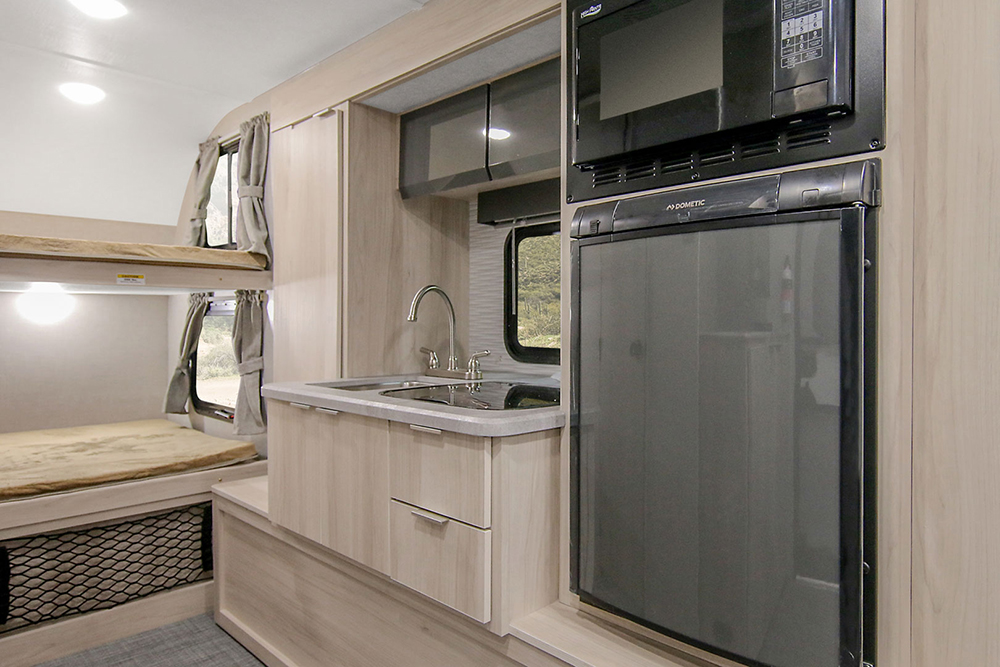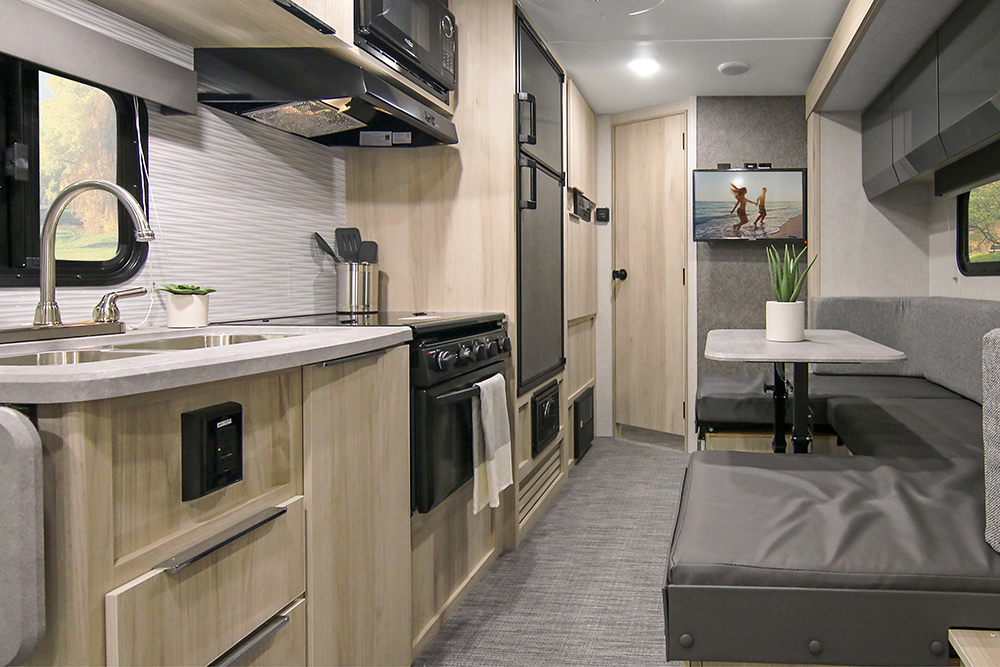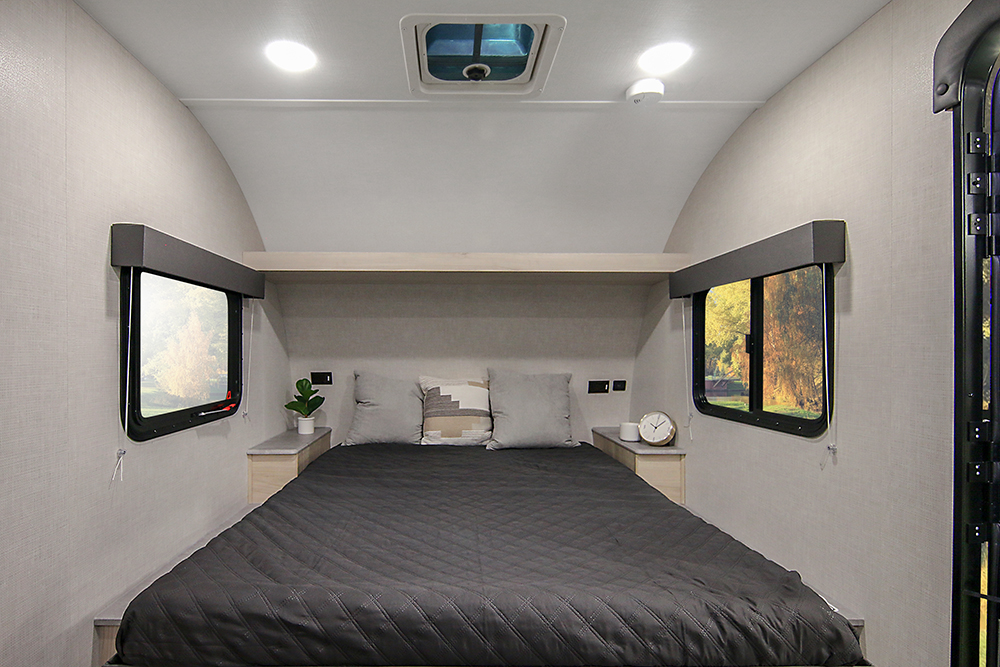
Airstream might be the world’s most iconic RV maker, but it’s towables are stratospherically priced. It’s also not the only game in town. For more than 60 years, Winnebago has been the go-to brand for the everyman — for average folk looking to explore the open road. Lately, the Iowa-based manufacturer has jumped feet first into the rugged RV game. Its latest go-anywhere towable proves it’s now a serious contender both on- and off-road.
Winnebago’s 2021 Hike is designed to be a hardcore towable for travelers who appreciate getting far, far off the beaten path, literally. The two available models — a 20.6-foot single-axle and a flagship, 25-foot double-axle variation — are outfitted from the factory with a bevy of adventure-centric features. The exterior boasts a powder-coated steel “exo-skeleton” that works as a built-in rack system for hauling almost any recreational gear. Whatever your addiction — paddleboards, kayaks, mountain bikes, skis — the necessary equipment easily mounts to the Hike’s shell. Plus, a pickup truck-style, diamond-plate steel storage bin adds room for other small accessories.
Not surprisingly, the Hike rides on an upgraded, NXG-engineered frame and chassis that thrive off-pavement. That includes beefy, all-terrain tires, offset wheels, and off-road-ready fenders. The stock high-lift kit makes quick work of rocky terrain. With a curb weight of less than 4,500 pounds, every Hike model is also easily towable by many mid-sized trucks and SUVs.
Inside, the Hike is available in five flexible floorplans designed to sleep between three and four adults. For such a rugged trailer, the interior is surprisingly plush. Every model offers the essentials, including a modern HVAC system, a spacious bathroom, and a well-appointed galley kitchen. The long list of standard and optional upgrades includes everything from wireless charging bases and LED TVs to built-in Wi-Fi hot spots and Bluetooth-enabled audio. Solar wiring is also available to make the Hike a real off-grid beast.
The Winnebago Hike travel trailer is available now with a base price of $27,513. With the recent spike in RV popularity, however, don’t be surprised if dealers are charging a hefty markup.
If you’re in the market for an all-in-one driveable camper and money is no object, check out the Winnebago Revel Off-Road RV.





